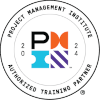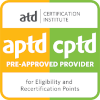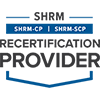Product Details
Topics Covered
- Types of networks
- LANs, WANs, MANs
- Intranet, extranet
- Types of transmissions
- Analog vs. digital
- Baseband vs. broadband
- OSI Model
- TCP/IP Model
- IPv4 and IPv6
- Network address translation
- Network protocols
- SCADA systems
- Routing protocols
- Data link protocols
- Network devices
- Forwarding tables and gateways
- Firewall
- Wireless networking
- Link encryption
- End-to-end encryption
- VPNs
- Network attacks
Key Features
- Mobile-friendly
- Audio-enabled
- Badge and credit-awarding
- Real-world case studies
- Fully accessible
- Games & Flashcards
- Expert-supported
- Video content
Course Preview
Course Description
Learning Outcomes
- Discuss the general concepts that enable networking and its role in information technology
- Compare the different types of networks, including LANs, WANs, and MANs, as well as the Internet, intranets, and extranets
- Explain what the Open Systems Interconnection (OSI) Reference Model is and identify its seven layers
- Contrast the OSI model with the TCP/IP Model
- Identify common protocols and differentiate among network, routing, and data link protocols
- Describe the functions of common networking devices, including bridges, routers, hubs, repeaters, switches, and firewalls
- Discuss how wireless networks work and the technology that enables them
- Identify common network attacks and how they can be prevented
- Analyze a real-world scenario and make appropriate recommendations to address and improve network security
Notes
This course has an "Ask the Expert" feature, which submits your questions directly to an expert in the field you are studying. Questions are answered as quickly as possible and usually within 24 hours.
As an Accredited Provider, MindEdge offers for its learning events that comply with the Continuing Education and Training Standard.
Learners must achieve an average test score of at least 70% to meet the minimum successful completion requirement and qualify to receive credit. Learners will have three attempts at all graded assessments.
Project Management Institute, , the Registered Education Provider logo, Project Management Professional, , Project Management Body of Knowledge, , Agile Certified Practitioner, -, Risk Management Professional, -, the Talent Triangle, and the Talent Triangle logo are marks of the Project Management Institute, Inc.
Information in this course has been taken from A Guide to the Project Management Body of Knowledge, (® Guide) - Sixth Edition, Project Management Institute Inc., 2017.
The following list outlines the you will earn for completing this course, based on the certifications you have.
CAPM®/PMP®/PgMP® |
|---|
| Ways of Working PDUs: 4.5 |
| Power Skills PDUs: 0 |
| Business Acumen PDUs: 0.5 |
| TOTAL: 5 |
PfMP® |
|---|
| Ways of Working PDUs: 0 |
| Power Skills PDUs: 0 |
| Business Acumen PDUs: 0.5 |
| TOTAL: 0.5 |
PMI-ACP® |
|---|
| Ways of Working PDUs: 4.5 |
| Power Skills PDUs: 0 |
| Business Acumen PDUs: 0.5 |
| TOTAL: 5 |
PMI-PBA® |
|---|
| Ways of Working PDUs: 0 |
| Power Skills PDUs: 0 |
| Business Acumen PDUs: 0.5 |
| TOTAL: 0.5 |
PMI-RMP® |
|---|
| Ways of Working PDUs: 4.5 |
| Power Skills PDUs: 0 |
| Business Acumen PDUs: 0.5 |
| TOTAL: 5 |
PMI-SP® |
|---|
| Ways of Working PDUs: 0 |
| Power Skills PDUs: 0 |
| Business Acumen PDUs: 0.5 |
| TOTAL: 0.5 |




